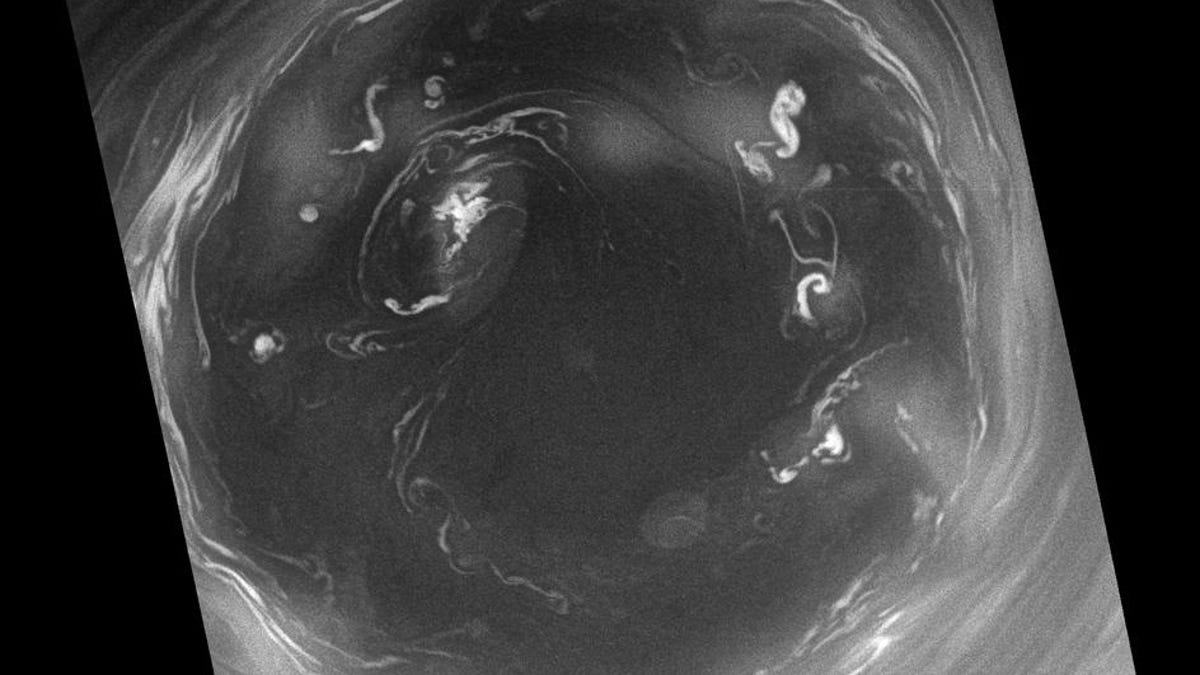Cassini provides most detailed image yet of Saturn's titanic storm
The giant storm raging at Saturn's south pole has been revealed in more detail than ever before -- and the storm is more complex than first thought.
Saturn may look serene in some of the beautiful photographs Cassini sends back home to Earth, but it's a pretty turbulent place, with massive permanent storms raging at both poles. At the north pole, the famous hexagonal storm. At the south pole, a storm 8,000 kilometres (5,000 miles) across, two-thirds Earth's diameter.
This newly released photo from Cassini, a composite of two images taken in July 2008, shows this storm in 10 times more detail than any photo of it we've ever seen before. And it's revealed some interesting things.
"Previous images revealed an outer ring of high clouds surrounding a region previously thought to be mostly clear air interspersed with a few puffy clouds that circulate around the center," a post on JPL-NASA's Cassini website reads. "This new image shows that what looked like puffy clouds at lower resolution are actually vigorous convective storms that form yet another distinct, inner ring."
There's an atmospheric haze that hides this from view in less detailed photographs. In this image, however, you can see the structures beneath the haze, and where they have punched through. One of these, seen in the ten o'clock position in the photograph, has even created its own, smaller vortex.
However, the clear area in the centre of the ring indicates that the warm air pushed up by the storms falls back down. The convection, or warm rising air, produces the clouds that you see, when the warm rising gases reach the cooler layers in Saturn's atmosphere and condense into clouds.
In Earth hurricanes, this convection occurs in the walls of a storm's eye, but on Saturn, it seems to be appearing within the eye as well. That's not the only difference between Saturn's storms and Earth's storms. On Earth, hurricanes need to start over water, an ocean, and they travel freely. Saturn's southern polar storm is fixed, and has no ocean at its base.
Because the photograph was taken with a filter that captures light at wavelengths where methane, abundant in Saturn's atmosphere, is relatively transparent, allowing the camera to see through the methane and obtain a more detailed view of cloud structures.


